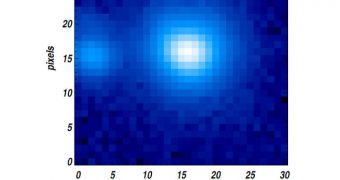Thus far, astronomers have confirmed 560+ extrasolar planets, and a NASA telescope has another 1,235 candidates lined-up for close analysis. One of these bodies has recently been confirmed as an exoplanet, by a team of researchers in the United States.
The American space agency created the Kepler Telescope specifically for finding Earth-like planets around distant stars. Thus far, the observatory has yielded numerous positive results, and experts expect that 70 to 80 percent of the new candidates will eventually be confirmed as well.
Using the Hobby-Eberly Telescope (HET), an international collaboration of scientists recently manged to confirm that the object known as Kepler-15b is indeed an exoplanet. The celestial body revolves around the star Kepler-15, which is also known as KOI-12.
Telescopes such as HET are needed to confirm discoveries made from space because they have stronger instruments. Now that astronomers know where to look, they can easily detect whether a planet exists around a particular star or not.
The University of Texas in Austin-managed observatory is capable of detecting wobbles in stars' rotation using spectroscopes. These wobbles are produced when an exoplanet orbits its parent star at close range, pulling on the larger object via the force of gravity.
Early estimates from the Kepler team indicated that the planet should complete a full orbit around Kepler-15 in just 5 days, while at the same time transiting the surface of the star – as seen from our vantage point – in just 3.5 hours.
After analyzing the faraway system for 9 months, between March and November 2010, the HET team determined that a year on the hot-Jupiter-class planet lasts only 4.94 days. The exoplanet is now estimated to have a radius 0.96 times that of Jupiter.
Kepler-15b tips the scales at 0.66 Jupiter masses, which means that it has an overall density of about 0.9 grams per cubic centimeter. Interestingly, this is not all the HET team found when investigating the star.
The research group, which includes experts from the UTA, the University of Copenhagen, and the University of California in Berkeley (UCB), among others, say that there are strong indications other planets may be orbiting this star.
In the future, other studies will pick up this effort, until the Kepler-15 star system reveals all of its mysteries, Universe Today reports.

 14 DAY TRIAL //
14 DAY TRIAL //